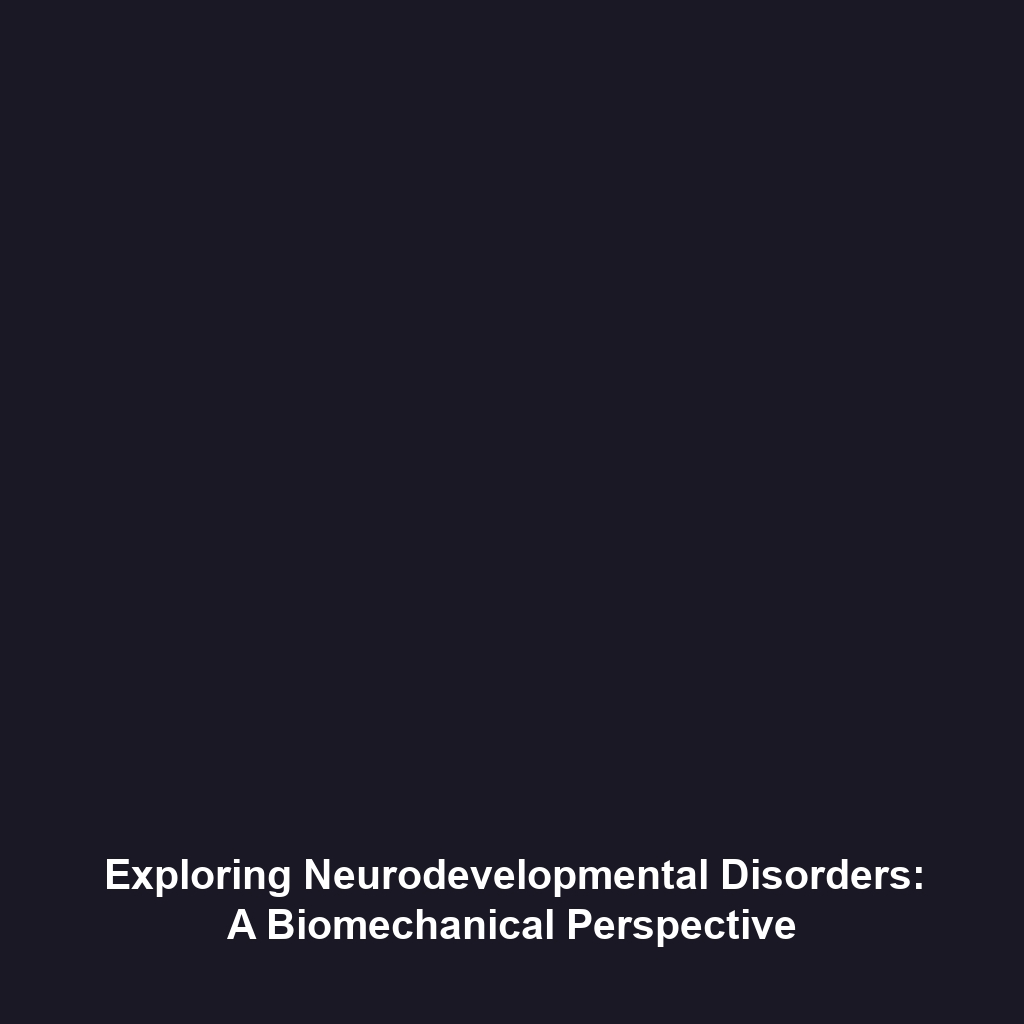Neurodegenerative Diseases: Insights from Biomechanics
Neurodegenerative diseases represent a critical area of study within the field of biomechanics, characterized by progressive degeneration of the structure and function of the nervous system. This category includes common conditions such as Alzheimer’s disease, Parkinson’s disease, and amyotrophic lateral sclerosis (ALS). Understanding these diseases through the lens of biomechanics not only illuminates the physical changes occurring in patients but also enables the development of effective therapeutic interventions. This article delves into key concepts, real-world applications, challenges, and future research directions concerning neurodegenerative diseases and biomechanics.
Key Concepts in Neurodegenerative Diseases and Biomechanics
Neurodegenerative diseases influence motor function, balance, and overall physical performance, making biomechanics a vital area of exploration. Here are some crucial concepts:
- Pathophysiology: Neurodegenerative diseases often lead to cellular degeneration, which affects nerve signal transmission and muscle control.
- Biomechanical Analysis: Gait analysis and movement assessments can provide insights into how these diseases affect a person’s functional abilities.
- Wearable Technology: Devices that monitor movement can help in tracking disease progression and evaluating therapeutic interventions.
Applications and Real-World Uses
The integration of biomechanics into the study of neurodegenerative diseases has led to several significant real-world applications:
- Rehabilitation Strategies: Tailored exercise programs are designed based on biomechanical assessments, improving motor function in patients.
- Assistive Devices: Advanced technologies such as exoskeletons utilize biomechanical principles to assist those with severe mobility impairments.
- Telemedicine: Remote monitoring using biomechanical data is becoming crucial in managing neurodegenerative diseases effectively.
Current Challenges in Neurodegenerative Diseases Research
Despite advancements, several challenges persist in studying neurodegenerative diseases within the framework of biomechanics:
- Variability in Disease Progression: Each patient’s experience with neurodegenerative diseases can differ, complicating the development of standardized treatment protocols.
- Data Integration: Combining biomechanical data with neurological assessments remains a technical hurdle.
- Funding and Resource Allocation: Limited financial resources can restrict innovative research in this interdisciplinary field.
Future Research and Innovations
Innovations on the horizon indicate exciting possibilities for the study of neurodegenerative diseases in biomechanics:
- AI and Machine Learning: These technologies are poised to enhance the accuracy of biomechanical assessments and predict disease progression more effectively.
- 3D Bioprinting: Future research may explore bioprinted tissues, which could play a substantial role in studying the mechanics of neurodegenerative diseases.
- Rehabilitation Robotics: Next-gen robotic devices designed to assist in rehabilitation will likely incorporate advanced biomechanical principles.
Conclusion
Understanding neurodegenerative diseases through the lens of biomechanics offers invaluable insights into both pathophysiology and treatment. Key concepts, current applications, challenges, and future innovations highlight the importance of continued interdisciplinary research in this area. For those interested in exploring more about the intersection of biomechanics and health-related topics, consider visiting our Related Articles section for further reading.
